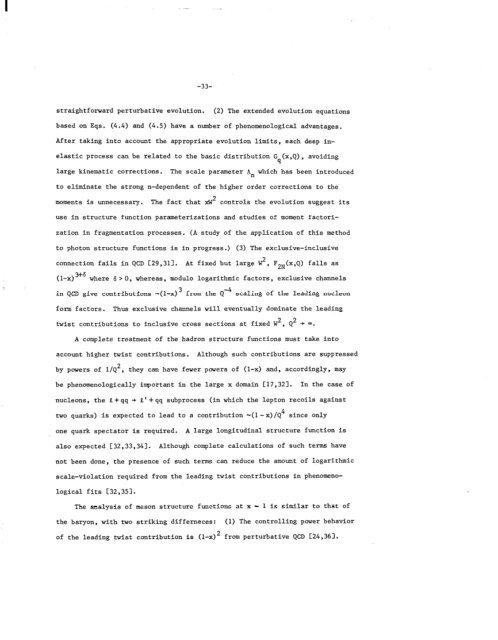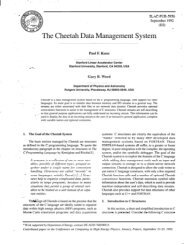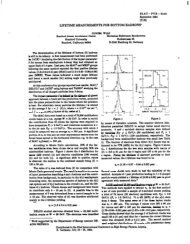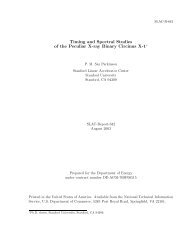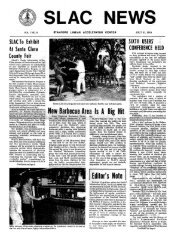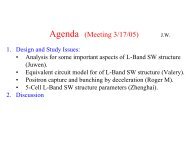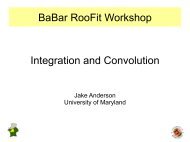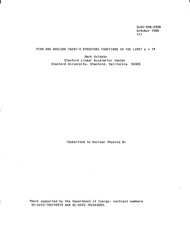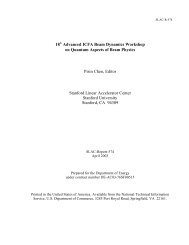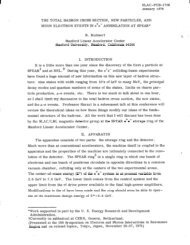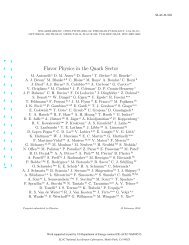slac-pub-2605 - SLAC - Stanford University
slac-pub-2605 - SLAC - Stanford University
slac-pub-2605 - SLAC - Stanford University
You also want an ePaper? Increase the reach of your titles
YUMPU automatically turns print PDFs into web optimized ePapers that Google loves.
-33-<br />
straightforward perturbative evolution. (2) The extended evolution equations<br />
based on Eqs. (4.4) and (4.5) have a number of phenomenological advantages.<br />
After taking into account the appropriate evolution limits, each deep in-<br />
elastic process can be related to the basic distribution G,(x,Q), avoiding<br />
large kinematic corrections. The scale parameter A, which has been introduced<br />
to eliminate the strong n-dependent of the higher order corrections to the<br />
moments is unnecessary. The fact that xW2 controls the evolution suggest its<br />
use in structure function parsmeterizations and studies of moment factori-<br />
zation in fragmentation processes. (A study of the application of this method<br />
to photon structure functions is in progress.) (3) The exclusive-inclusive<br />
connection fails in QCD [29,311. At fixed but large W2, F2W(x,Q) falls as<br />
(1-xP6 where 6 >O, whereas, modulo logarithmic factors, exclusive channels<br />
in QCD give contributions i(l-~)~ from the Qe4 scaling of the leading nucleon<br />
form factors. Thus exclusive channels will eventually dominate the leading<br />
twist contributions to inclusive cross sections at fixed W2, Q2 + m.<br />
A complete treatment of the hadron structure functions must take into<br />
account higher twist contributions. Although such contributions are suppressed<br />
by powers of l/Q*, they can have fewer powers of (l-x) and, accordingly, may<br />
be phenomenologically important in the large x domain [17,32]. In the case of<br />
nucleons, the Il+qq + II'+qq subprocess (in which the lepton recoils against<br />
two quarks) is expected to lead to a contribution -(l-x)/Q4 since only<br />
one quark spectator is required. A large longitudinal structure function is<br />
also expected C32,33,341. Although complete calculations of such terms have<br />
not been done, the presence of such terms can reduce the amount of logarithmic<br />
scale-violation required from the leading twist contributions in phenomeno-<br />
logical fits [32,351.<br />
The analysis of meson structure functions at x w 1 is similar to that of<br />
the baryon, with two striking differneces: (1) The controlling power behavior<br />
of the leading twist contribution is (l-~)~ from perturbative QCD [24,361.


